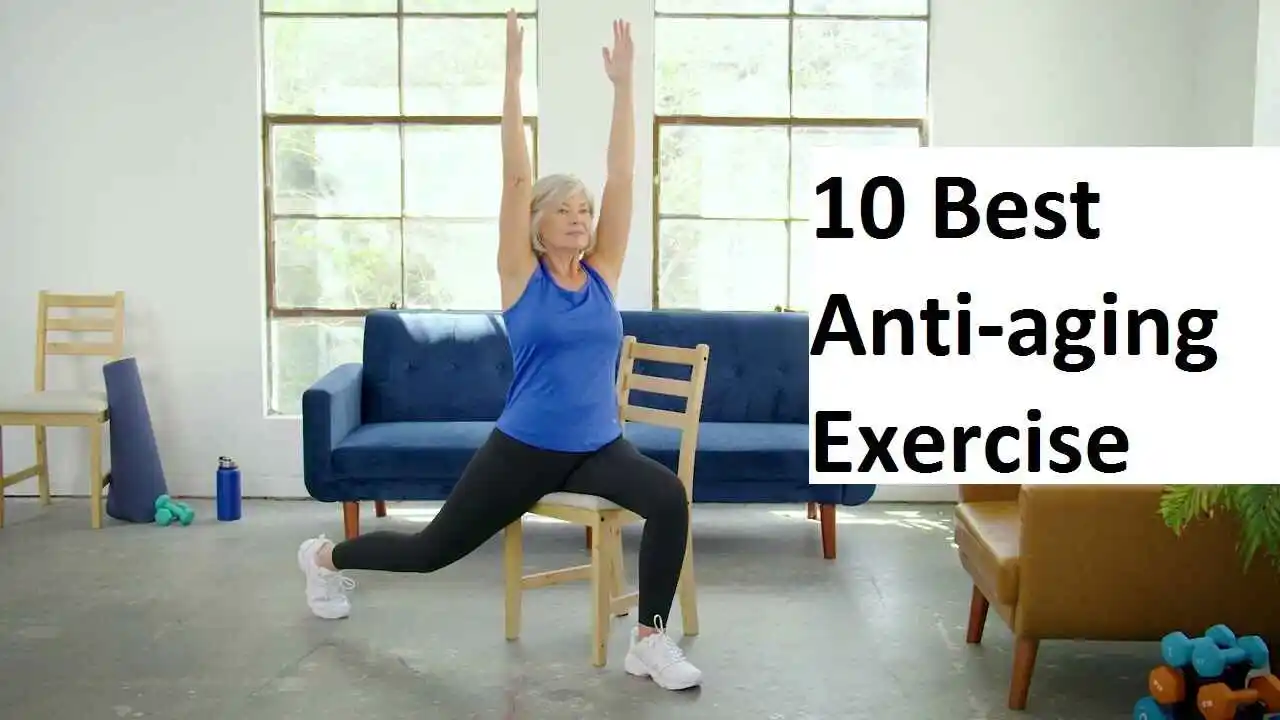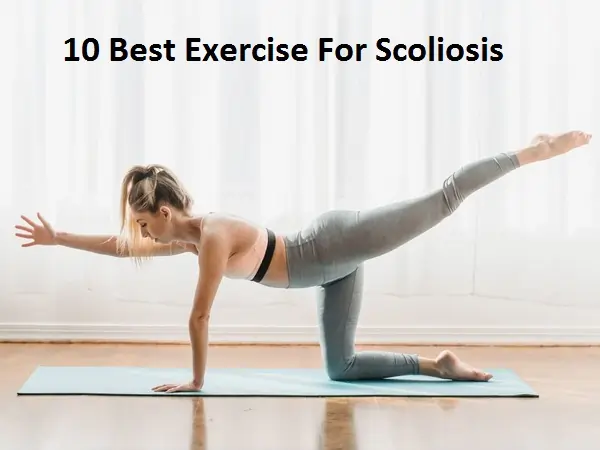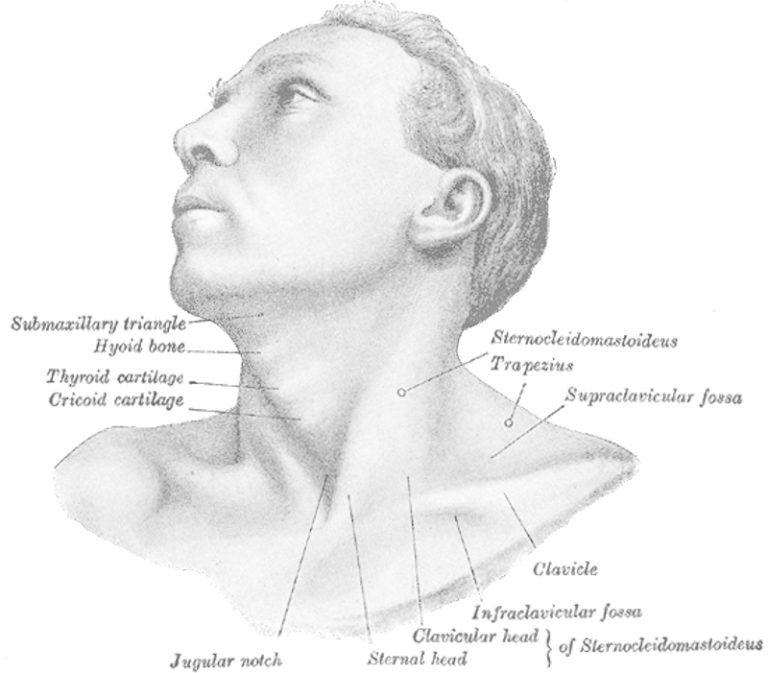10 Best Anti-aging Exercise
Anti-aging Exercise is essential for maintaining vitality, strength, and flexibility as we age. Regularly practicing the right movements can help slow down the aging process, keeping muscles strong, joints flexible, and energy levels high.
Table of Contents
Introduction
Aging is a natural process, but staying active with the right exercises can help slow down its effects, keeping us feeling youthful, strong, and vibrant. Regular physical activity not only improves strength, flexibility, and balance but also promotes healthy skin, boosts energy levels, and enhances mental clarity.
This influences a person’s physiological and physical aging. Exercise can be done in many different ways, and not all types of exercise have the same anti-aging benefits.
In this article, we’re sharing the 10 best anti-aging exercises that you can incorporate into your routine to look and feel your best at any age. Let’s get started on a journey to stay fit, healthy, and age gracefully!
How Do Our Bodies Improve Through Age?
All of our significant organs begin to lose some of their functionality as we grow and develop through adulthood.
There is more to aging than just the development of wrinkles and gray hair. It results in variations that occur in every cell, tissue, and organ. It consequently has a detrimental impact on the body’s systems and their capacity to operate as indicated.
A very complicated process, aging differs from individual to person.
There are numerous ideas as to why it has detrimental effects on the body. These include genetic predisposition, metabolic problems, byproducts in food and medicine, and sun exposure.
10 Best Exercise for Anti-aging
Squats
- Your feet should be almost wider than your thighs as you start, with your toes sticking gently out.
- Push your hips back while using your abdominal muscles to move your weight back into your heels while maintaining an even pressure in your feet and an up-and-out chest.
- Lower yourself into a squat until your chest starts to round or flex forward, or until your heels start to rise off the ground. Your form should decide your depth.
- Push through your heels to return to your starting position while maintaining a tight core and an outstretched chest. At the top, squeeze your glutes.
- Do 10–15 repetitions. Complete up to three sets.
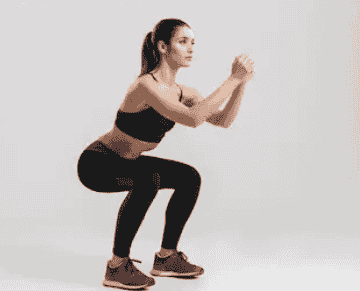
Standing Calf Raise
- As you stand, put the balls of your soles on the staircase or risers.
- Raise your heels to the max as possible.
- Slowly lower them until your heels are barely above the stair or step’s top.
- Go back to your initial position as soon as your calf muscles feel stretched (not tight).

Hanging Leg Raise
- The hanging leg lift is an effective exercise for the back and abdominal area. This workout only requires a place to hang from. This could be considered a limb or a chin-up belt.
- Tense your midsection after you’re hanging. Slowly elevate your legs while maintaining a straight posture. You should lift your legs as high as you can.
- Gradually return your legs to the starting position after allowing a moment to recover.
- Continue exercising until you’re done with the specified amount of repetitions.
Leg Raise Tips:
- When performing the hanging leg raise, speed is crucial. You’re applying momentum if you swing your legs, and the workout isn’t much for your abs.
- Keep your body from swinging. Try to maintain maximal balance and stability as you can in your entire body.
- By holding a dumbbell between their feet, advanced lifters can increase their weight.
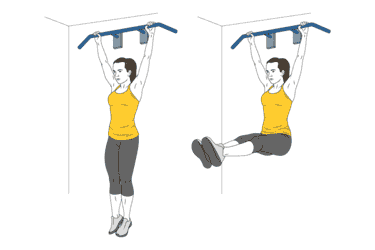
Walking
- You have your head up. Your focus is forward, not downward.
- Your back, shoulders, and neck are relaxed instead of rigidly erect.
- You have your elbows slightly bent and your arms swinging freely. It’s suitable to pump your arms a little.
- Your stomach muscles are more rigid, and your back is never twisted forward or backward.
- You move your foot from heel to toe when you walk readily.
benefits of walking
- Reduce body fat whilst maintaining your weight within the limits of health.
- Manage or control several kinds of illnesses, such as type 2 diabetes, cancer, high blood pressure, heart disease, and stroke.
- Improve cardiovascular fitness
- Strengthen your bones and muscles
- Improve muscle endurance
- Increase energy levels
- Improve your mood, cognition, memory, and sleep
- Improve your balance and coordination
- Strengthen immune system
- Reduce stress and tension

Climbing Stairs
- Authenticity is much more important than abundance when applied to exercise. Too many people set a “one-hour” workout in their minds, and they just don’t do it if they can’t find the time.
- Aim for power workouts that last no more than 25 to 30 minutes, after which you will increase your heart rate, burn your muscles, and perform your best repetitions. There should be an exceptional warm-up and an important cool-down in 35 to 40 minutes.
- In addition to challenging your body, walking or running upstairs for 30 minutes can burn more calories than an hour-long run or move.
- Take a few flights at first, then walk and run at a leisurely pace. Run as you recover, then take two steps at a time and run or walk.
Benefits
- It is completely free, and practically everyone has access to a flight of stairs.
- When it takes advantage of gravity, we have to work harder and burn more calories when we are heavier.
- It is a rather strenuous workout that raises our heart rate quickly which can significantly increase our cardiovascular fitness.
- Our most common trouble spots, such as the thighs, buttocks, calves, and stomach, are strengthened and shaped by it.
- It is an excellent method for burning the most calories and is suitable for people like me who don’t have much time to work out.
- The most beneficial outcomes from stair climbing can be accomplished by pairing it with other exercises like walking, skipping, and weight training.
- No matter how fit they are, practically everyone can do it.
- It contributes to bone strength since it bears weight.
- When done correctly and without a prior issue, it is low impact and safe for the knees.

High Impact Movements
- running
- Cross-Fit
- calisthenics
- jumping rope
- racquetball or tennis
- hiking
Advantages High-impact movement
- More bone density is increased and bones are strengthened by high-impact exercise than by low-impact activities. Equal to muscles, bones are living tissue, and exercising them causes their bulk to grow.
- High-impact exercises can be high-intensity as well, raising your heart rate and burning more calories than more relaxed forms of exercise. But, as we’ll see later, low-impact exercise can also be extremely difficult.
- By strengthening the muscles encircling the joints, these exercises can also help to strengthen them.

Stretching exercises
Warm up for five to ten minutes with gentle exercise before stretching. Stretching is usually best done after working exercise. Stretches should be slow and gentle. Avoid bouncing. As you stretch, take a breath. You’ve overextended yourself if you notice pain.
There should be an initial push when you show. After that, maintain the stretch for roughly 30 seconds. Several times or multiple times, continue the stretch on every side. A minimum of two or three days a week should be committed to stretching all of the primary muscles in your body.
Calf stretch
- Keep yourself at arm’s reach from a wall or similar sturdy part of the exercise apparatus.
- Position your right foot behind your left.
- Lean your left leg forward progressively while maintaining a straight right knee and a flat right heel.
- Hold your hips forward and your back straight. Your feet should not be turned inside or outward.
- Hold for approx 30 seconds.
- Repeat after alternating legs.
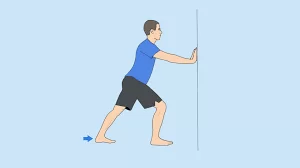
Hamstring stretch
- Place your left leg next to the wall while lying on the floor close to a door frame or a wall’s outer corner.
- Raise your left leg, then press your left heel down. Maintain your left knee bent just slightly.
- Rotate your left leg significantly to extend it across the inside of your lower thigh.
- Hold for almost 30 seconds.
- Repeat after alternating legs.
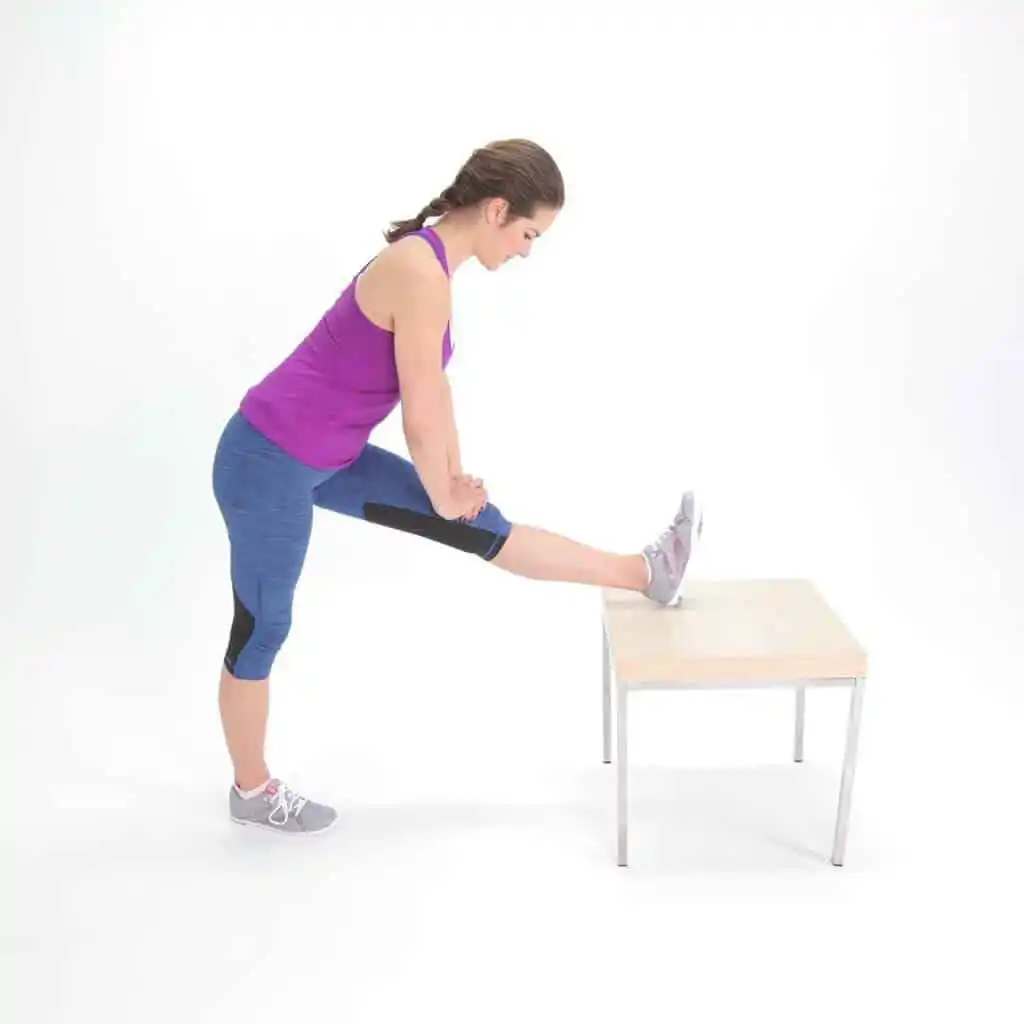
Quadriceps stretch
- If you need assistance, stand close to a wall or a piece of strong exercise apparatus.
- To obtain a stretch at the front of your leg, carefully pull your heel up and back while retaining your ankle resting gently.
- Keep your knees close together and tighten your abdominal muscles to stop your tummy from drooping outward.
- Hold for around 30 seconds.
- Repeat after shifting legs.
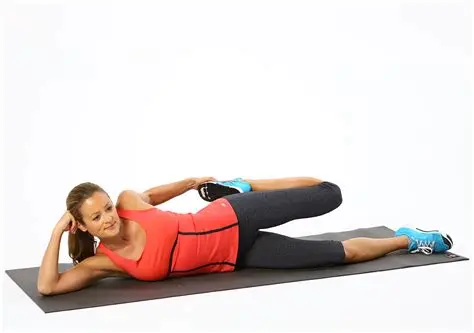
Hip flexor stretch
- On your right knee, bend. Use an unrolled towel to support your kneecap.
- Bend your knee, move your left foot in toward you, and position the object that you are grasping on your left leg to support your back.
- To avoid bending at the waist, place your right hand on your right hip. Retain a straight spine and tightened abdominal muscles.
- Enhance the amount of weight you put on your front leg by bending forward. Your right thigh will feel stretched.
- Hold for roughly 30 seconds.
- Repeat after switching legs.
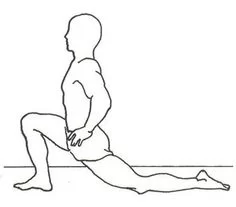
Iliotibial band stretch
- For support, position yourself near a wall or an adequate element of workout equipment.
- Curl the left leg beneath the right at the ankle.
- Extend your left arm to lift yourself and grasp your right side. Your left hip will feel stretched.
- Hold for roughly 30 seconds.
- Repeat after switching sides.
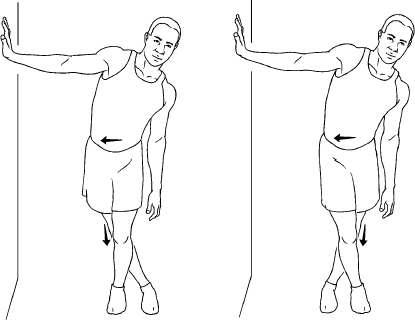
Knee-to-chest stretch
- When lying on your back on a level surface, bring your heels flat on the floor.
- Gently raise one leg to your chest while your lower back begins to relax.
- Your knee should be as near to your chest as it feels comfortable.
- Alternatively, extend the opposite leg or bend your knee to keep it in a calm, comfortable position.
- Hold for roughly 30 seconds.
- Repeat after switching legs.
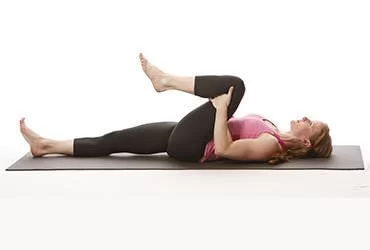
Aerobics
- increases the cardiovascular system’s ability to absorb and carry oxygen.
- maybe done in a variety of ways, but they all share the characteristic of being accomplished at a heart rate between 70 and 80 percent of the individual’s age-appropriate maximum.
- modest energy expenditure over an extended period, making it the foundation of endurance training.
- depends mostly on aerobic energy generation, meaning that the muscle areas that are worked out by this kind of exercise depend on aerobic metabolism, which uses oxygen for transforming amino acids, carbs, and fatty acids into adenosine triphosphate (ATP), which is the energy source.
- Walking, cycling, swimming, jogging, dancing, trekking, and long-distance running are a few examples.
Effects of aerobic exercises
The following discusses the physiological effects of aerobic exercises:
- Heart rate: The resting heart rate declines for any given physical activity when aerobic exercise is carried out. The highest HR maintains constant.
- Cardiac output: While resting CO remains stable, maximum CO rises. When the resting SV rises, the resting HR falls in conjunction.
- Aerobic capacity: The highest amount of oxygen that a person can utilize per unit of time during an intense activity at sea level is known as maximal aerobic capacity or maximal oxygen uptake (VO2 max). With aerobic training, maximum aerobic capacity rises. The trained muscles are the only ones that sustain the alterations.
- Stroke volume: The RPP at specific exertion levels reduces when SV arises at rest and improves at a lower HR.
- Myocardial oxygen capacity: While maximum MVO2 often maintains pervasive Mvo2 diminishes with training at a given workload. This lowers heart attacks.
The body takes advantage of these impacts in the following methods:
- Increased blood volume during intense exercise contributes to greater endurance.
- Lung volume increase
- Cardiac muscle strength
- A rise in HDL levels minimizes the risk of atherosclerosis by decreasing the ratio of entire cholesterol to HDL.
- Overcoming and enhancing mental and emotional well-being
- Increase bone density.
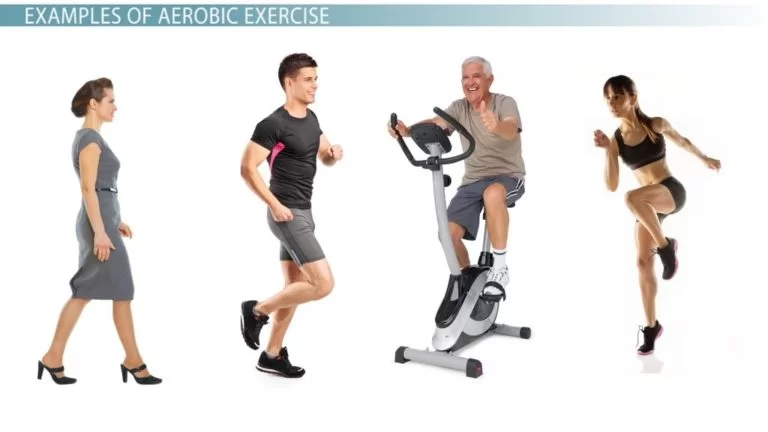
Resistance Training
- Free weights – Typical exercise apparatus, which includes barbells and dumbbells.
- Weight machines – instruments with retractable seats and handles that have connections to hydraulics or weights
- Medicine balls – weighted balls
- Resistance bands – When stretched, these offer resistance, much like giant rubber bands. They are mobile and great for every kind of exercise. The bands provide continuous resistance while rolling.
- Your body weight –Push-ups, chin-ups, and squats all gain benefit from this kind of exercise. It’s convenient to use your body weight, particularly while traveling or working.
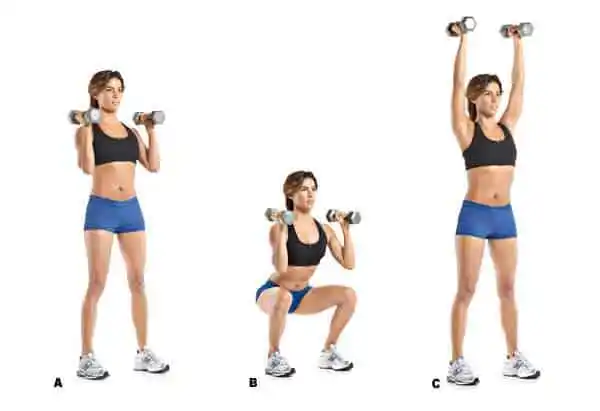
Reaction Training
Reaction training is the next anti-aging activity. SMARTfitTM training, Zumba, or playing a sport like tennis are a few examples. Your physique, speed of reaction, memory, and ability to change direction while keeping your balance all increase as a result.
- Ball Drops- Ask a partner to hold a tennis ball in each hand while standing five meters away. Then, instruct them to drop one of the balls from shoulder height.
- Agility Ladder
- Plate Hops
- Box Jumps
- Drop Snatch with a Clap.
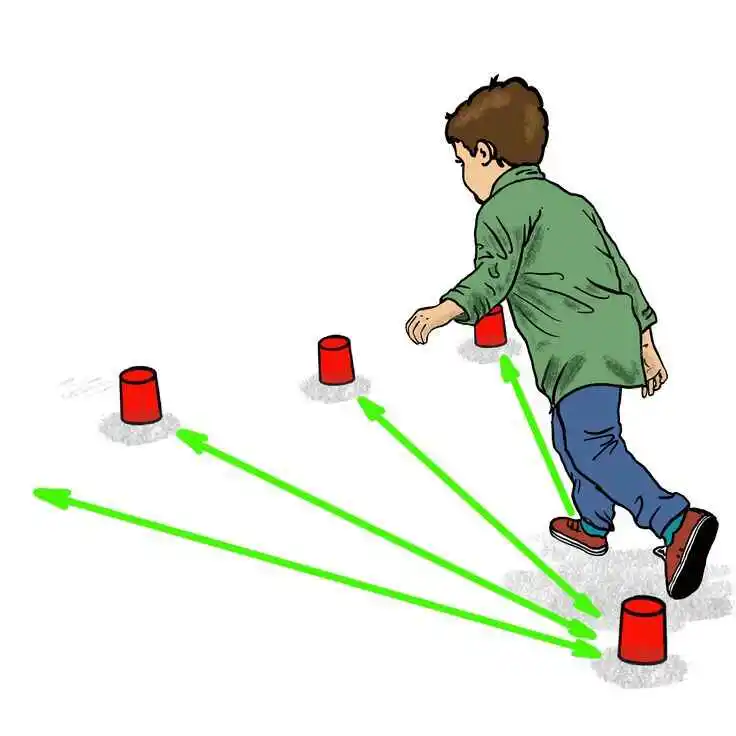
9 Best Anti-Aging Exercises to Stay Strong and Youthful
Conclusion:
Incorporating these 10 anti-aging exercises into your routine can make a real difference in how you look and feel as the years go by. Regular practice will help you build strength, improve flexibility, and boost your energy—helping you maintain a youthful, active lifestyle. Remember, consistency is key, so keep moving, stay committed, and enjoy the journey of aging gracefully and feeling your best at every stage of life!
FAQs
How does exercise help prevent aging?
Also, some of the neurological and psychological aging effects can be prevented with the same kinds of exercise. Along with improving sleep and elevating mood, endurance exercise reduces sadness and anxiety.
What kind of workout gives you a healthy appearance?
Yoga is an effective way to stay young. Regular yoga asana practice will improve strength, flexibility, and balance all of which are factors in a youthful appearance.
Can you prevent aging with resistance training?
Exercise is good for more than just heart health; it can also help rejuvenate aging skin. Unexpectedly, resistance training can enhance the suppleness, structure, and thickness of skin in addition to aerobic exercise, according to a study done on women who had previously been sedentary.
What foods have anti-aging properties?
Fatty Fish
Nuts & Seeds
Leafy Greens
Avocado
Tomato
Green Tea
Dark Chocolate
Does stretching help prevent aging?
Stretching is not just something you should do before and after working out. Thus, consider stretching into your daily regimen and begin doing it immediately. You are certain to enjoy the satisfaction and anti-aging advantages that come with persistent stretching.
Reference
- Motion, B. T. (2021, May 20). Top 10 Anti-Aging exercises. Back to Motion. Denver Physical Therapy. https://backtomotion.net/top-10-anti-aging-exercises/
- A guide to basic stretches. (n.d.). Mayo Clinic. https://www.mayoclinic.org/healthy-lifestyle/fitness/in-depth/stretching/art-20546848
- Stair climbing – one of the best exercises. (n.d.). https://www.axisbank.com/axisactive/blog/stair-climbing-one-of-the-best-exercises.html
- https://www.healthline.com/health/exercise-fitness/squats-benefits
- Rogers, P. (2024, July 8). How to do hanging leg raises: proper form, variations, and common mistakes. Verywell Fit. https://www.verywellfit.com/how-to-do-the-hanging-leg-raise-3498232

